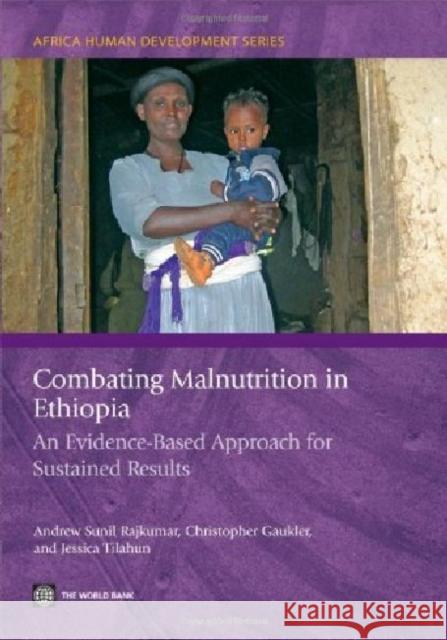Combating Malnutrition in Ethiopia: An Evidence-Based Approach for Sustained Results » książka
Combating Malnutrition in Ethiopia: An Evidence-Based Approach for Sustained Results
ISBN-13: 9780821387658 / Angielski / Miękka / 2011 / 164 str.
Despite recent progress, malnutrition remains a severe problem in Ethiopia, especially among young children. Many of them suffer lifelong consequences in terms of higher risk of mortality and future illness, impaired cognitive ability (including lower IQ) and educational attainment, and overall productivity loss. This report provides the findings from an in-depth data-based analysis of malnutrition in Ethiopia and its causes. It assesses various aspects of current nutrition programming in the country, noting the importance of Ethiopia's first National Nutrition Strategy and National Nutrition Program established in 2008. The report also examines key details including costs and benefits of a range of interventions against malnutrition in the country, including some that are not yet being implemented but could potentially be introduced. The analysis draws on data from household surveys, detailed program data and data from various sources on costs, impacts and potential coverage, among others. The report finds that contrary to what is commonly believed and traditionally used to guide policymaking, a substantial amount of the malnutrition in Ethiopia is due to factors other than food insecurity, pointing to the need for a multi-sectoral approach. Nutrition interventions in general are found to have high benefit-to-cost ratios - sometimes in the double or triple digits - with these ratios being especially high for micronutrient interventions, insecticide-treated bednets, deworming and community-based interventions. Among others, the report recommends the introduction of deworming for pregnant women in Ethiopia - which has the highest benefit-to-cost ratio among the interventions analyzed - and scaling up community-based interventions. These include the Community-Based Nutrition program which shows impressive results in Ethiopia after just over two years of implementation. The report also recommends various ways of improving the effectiveness of nutrition programming including by improving program targeting, enhancing coordination and linkages among programs, and establishing an effective nutrition information and surveillance system.











